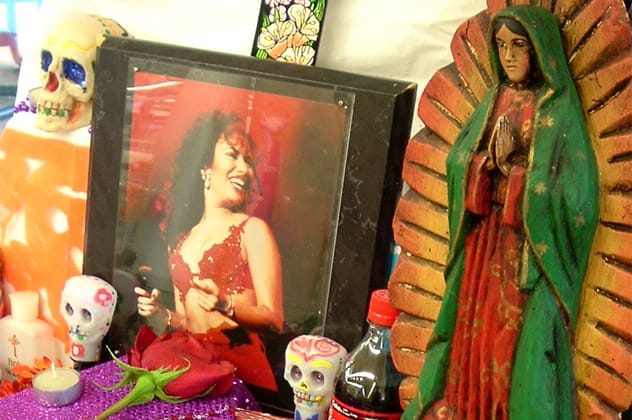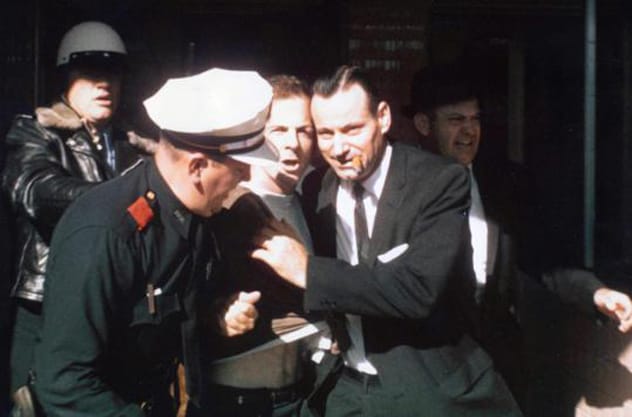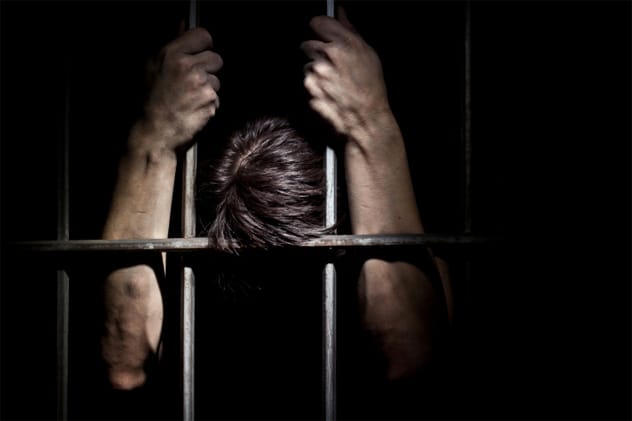Texas, known for its independent spirit, boasts a history as vast and varied as its landscapes. While the state prides itself on its resilience and larger-than-life persona, it also harbors a dark underbelly, rife with tales of violence that are as strange as they are brutal. Here are ten such acts that have marked the Lone Star State’s history.
Goliad Massacre

While the Alamo is etched in Texan lore, the Goliad Massacre remains a lesser-known yet equally tragic event. In 1836, during the Texas Revolution, Colonel James Fannin surrendered his forces to the Mexican Army after being overwhelmed at the Battle of Coleto Creek. The surrendered Texan soldiers were held at Presidio La Bahia in Goliad.
Under the orders of the Mexican President, the prisoners were executed. Those unable to walk were killed inside the fort, while the rest were marched outside and shot at point-blank range. Survivors were bludgeoned to death. Colonel Fannin was forced to watch the slaughter before being executed himself, his final requests denied by his captors.
Austin Plane Crash

In a shocking act of defiance against the IRS, Andrew Stack of Austin, Texas, took his grievances to a deadly extreme in February 2010. After setting fire to his home, Stack flew his single-engine Piper Dakota into an office building housing 190 IRS employees.
The resulting explosion killed Stack and Vernon Hunter, an IRS Revenue Officer. Thirteen others were injured. Stack’s suicide note detailed his frustration with the IRS, stating his drastic actions were a response to his perceived insanity of dealing with the agency.
The Texas Eyeball Killer

Charles Albright, dubbed the “Texas Eyeball Killer,” terrorized Dallas in the early 1990s. He murdered three prostitutes, each shot and then mutilated with surgical precision—their eyeballs were removed. The gruesome nature of the crimes and the precision involved made this case particularly disturbing.
After a fourth prostitute escaped and provided a description, Albright was apprehended. Despite a weak prosecution case, Albright, who had a history of violence and cruelty, was convicted of one murder and sentenced to life imprisonment.
Murder Of Selena

The murder of Selena Quintanilla-Pérez sent shockwaves through the Tejano music world and beyond. In 1995, at the height of her burgeoning career, Selena was shot by Yolanda Saldívar, the president of her fan club, who had been embezzling funds. The confrontation occurred in a motel in Corpus Christi, where an argument escalated, leading Saldívar to shoot Selena.
Selena died of blood loss shortly after. Saldívar was arrested after a standoff with police, convicted of murder, and sentenced to life in prison. Due to numerous death threats from other inmates, she remains in isolation for her safety.
Jake Evans

In October 2012, 17-year-old Jake Evans called 911 to confess that he had murdered his mother and sister with a .22 revolver. He chillingly told the dispatcher that he was evil and had been planning the murders for a while, expressing no anger towards his victims.
Evans had planned to extend the carnage to his grandparents and other sister. However, he was apprehended before he could carry out his full plan. Due to his age, he was sentenced to life in prison rather than the death penalty.
The Mysterious Death Of Greg Fleniken

The death of Greg Fleniken in a Beaumont, Texas hotel room in 2010 baffled investigators. Initially appearing to be from natural causes, an autopsy revealed severe internal injuries and a laceration on his scrotum. Private investigator Ken Brennan discovered a bullet hole patched with toothpaste in the adjacent room.
It was determined that Fleniken had been unintentionally shot by a drunken electrician in the next room, who was playing with a gun. Lance Mueller was eventually sentenced to 10 years for the crime, which might have been avoided had he come forward sooner.
J.D. Tippit

In the wake of John F. Kennedy’s assassination, Dallas police officer J.D. Tippit encountered Lee Harvey Oswald in a residential neighborhood. After a brief exchange, Oswald shot Tippit multiple times, resulting in his death. This crime, witnessed by several people, further complicated the already complex narrative surrounding JFK’s assassination.
Tippit’s death is often overshadowed by the Kennedy assassination, but it remains a significant part of the tragic events of that day in Dallas.
Luby’s Massacre

On October 16, 1991, George Hennard drove his pickup truck through the front window of Luby’s Cafeteria in Killeen, Texas, and began a mass shooting. He killed 23 people and injured 20 more before taking his own life. The Luby’s massacre was the deadliest mass shooting in American history for 16 years.
Hennard targeted mostly female patrons, the event led to significant changes in Texas law regarding concealed carry permits, as survivor Suzanna Hupp, who had left her gun in her car due to existing laws, became a vocal advocate for the right to carry.
Dr. John Hill

The story of Dr. John Hill involves wealth, infidelity, and suspected murder. Hill, a plastic surgeon, married Joan Robinson, the daughter of a Texas oilman. After Joan’s sudden illness and death, Hill was tried for murder but the trial ended in a mistrial. Before a retrial could occur, Hill was shot dead at his home.
The crime was linked to Lilla Paulus, connected to the victim’s father, who hired a gunman. The case sparked considerable suspicion and intrigue, though key figures died before all questions could be answered.
Jerry Duane Martin, The Last Execution of 2013

Jerry Duane Martin was executed in Texas on December 3, 2013, for the murder of prison guard Susan Canfield during an escape attempt. His execution marked the 508th in Texas since the reinstatement of capital punishment in the United States. Texas leads the nation in executions, with a system that catalogs the crimes and last words of those condemned.
The wide use of capital punishment in Texas compared to other states highlights the state’s tough-on-crime stance and its unique place in the American legal landscape.
These ten instances represent just a fraction of the violent episodes in Texas’s history, each carrying its own story. They remind us of the complexities of human nature and the enduring impact of violence on communities and individuals.
What are your thoughts on these events? Share your perspective in the comments below.










